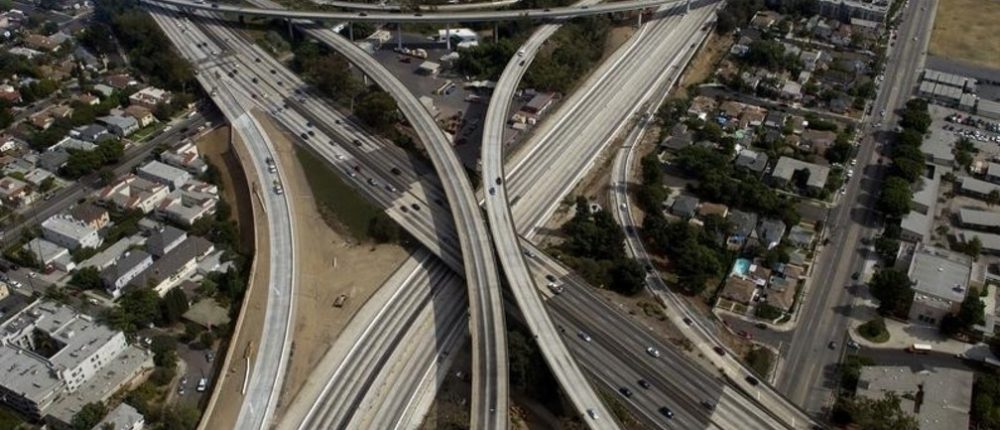How business can bridge the infrastructure gap
The world is in urgent need of more and better infrastructure, and the sums that must be spent to narrow the infrastructure gap – an estimated $4 trillion a year – are far beyond what it is realistic to expect governments to raise in taxes.
This means we need private investment, but private investors are wary of the risks involved in committing money to projects that will bring returns over a very long period of time. How can we increase investor confidence, to end the capital stand-off and unlock the necessary funds?
Caution is understandable, because a wide range of political and regulatory risks can hit projects whose life cycle is longer than the political cycle.
For example, a future government could decide to impose new regulations or taxes, renege on commitments to pay, cut short a concession to operate an infrastructure asset, or even nationalise it outright. Private investors weighing these risks also have to consider the fact that judicial processes will not be efficient or effective in enforcing the original agreement.
These are not new challenges. They were discussed, for example, at the High-Level Panel on Infrastructure during the B20 and G20 in Cannes in 2011. But we have so far lacked a systematic framework for thinking about them, and about what both the public and private sector can do to tackle them.
A new World Economic Forum report, Strategic Infrastructure: Mitigation of Political and Regulatory Risk in Infrastructure Projects, aims to fill that gap.
First, we need to identify the root causes of political and regulatory risk. These include the way that perceptions of the public interest can change over time, as attitudes evolve on matters such as environmental responsibility; the nature of political systems, which make it difficult for a present parliament to circumscribe the sovereignty of a future parliament; and mis-perception by investors about the likelihood of public pressure mounting over an issue, and governments responding.
There is no silver bullet in balancing investors’ need for predictability with electorates’ need for flexibility. But sometimes rules can be defined that allow for flexibility in a predictable way – an example being Germany’s feed-in tariff for newly built photovoltaic plants, which automatically adapts according to the amount of photovoltaic capacity connected to the grid.
Passing investment stability legislation and offering constitutional guarantees are part of what governments can do. But these are not enough on their own – they need to be backed by credible agencies and a strong commitment to anti-corruption. There is also scope for bilateral investment treaties to play a greater role. Although many such treaties already exist, they are often under-used, in part because protection clauses can be vaguely written and arbitration procedures controversial.
Alongside government actions, the private sector could also develop a wider range of risk-mitigation measures. Many of the harder risks, such as assets being expropriated or local currencies becoming inconvertible, can be addressed though financial instruments.
Carefully considered ownership structures, such as joint ventures with local partners and multilateral development banks, can help to deter political interference. And the greater the degree of professionalism, sustainability and openness with which a company operates, the less likely public pressure for political interference is to materialise in the first place.
Addressing the infrastructure gap is vital if the world is to urbanise, continue to deliver economic growth, spread prosperity and meet the challenge of climate change. Mitigating the risks of private investment in infrastructure will be possible only with the public and private sector working together in genuine and transparent partnership.
Watch a session from Davos 2015 on Closing the Infrastructure Gap.
Written by Pedro Rodrigues De Almeida, Director, Head of Infrastructure and Urban Development Industry.
[Image: The 405 freeway looking southbound running underneath the 10 freeway is shown in this aerial photo in Los Angeles, California September 29, 2012. REUTERS/Gina Ferazzi]
This article is also published on the Future of Construction Knowledge Sharing Platform and the WEF Agenda Blog.
--Future of Construction 14:51, 16 Jun 2017 (BST)
[edit] Find out more
[edit] Related articles on Designing Buildings Wiki
- 2050 and the Future of Infrastructure.
- 3 ways the world’s fastest growing economies can close the infrastructure gap.
- A better investment framework for Africa.
- Compact sustainable city.
- Concession agreement.
- Industry Disruption: 10 ways real estate is changing.
- Is Disruptive Innovation possible in the Construction Industry?
- Our critical infrastructure is more vulnerable than ever. It doesn’t have to be that way.
- The future of green infrastructure.
- The key trends making our cities greener, safer and smarter.
Featured articles and news
The UK's Modern Industrial Strategy: A 10 year plan
Previous consultation criticism, current key elements and general support with some persisting reservations.
Building Safety Regulator reforms
New roles, new staff and a new fast track service pave the way for a single construction regulator.
Architectural Technologist CPDs and Communications
CIAT CPD… and how you can do it!
Cooling centres and cool spaces
Managing extreme heat in cities by directing the public to places for heat stress relief and water sources.
Winter gardens: A brief history and warm variations
Extending the season with glass in different forms and terms.
Restoring Great Yarmouth's Winter Gardens
Transforming one of the least sustainable constructions imaginable.
Construction Skills Mission Board launch sector drive
Newly formed government and industry collaboration set strategy for recruiting an additional 100,000 construction workers a year.
New Architects Code comes into effect in September 2025
ARB Architects Code of Conduct and Practice available with ongoing consultation regarding guidance.
Welsh Skills Body (Medr) launches ambitious plan
The new skills body brings together funding and regulation of tertiary education and research for the devolved nation.
Paul Gandy FCIOB announced as next CIOB President
Former Tilbury Douglas CEO takes helm.
UK Infrastructure: A 10 Year Strategy. In brief with reactions
With the National Infrastructure and Service Transformation Authority (NISTA).
Ebenezer Howard: inventor of the garden city. Book review.
The Grenfell Tower fire, eight years on
A time to pause and reflect as Dubai tower block fire reported just before anniversary.
Airtightness Topic Guide BSRIA TG 27/2025
Explaining the basics of airtightness, what it is, why it's important, when it's required and how it's carried out.
Construction contract awards hit lowest point of 2025
Plummeting for second consecutive month, intensifying concerns for housing and infrastructure goals.
Understanding Mental Health in the Built Environment 2025
Examining the state of mental health in construction, shedding light on levels of stress, anxiety and depression.























